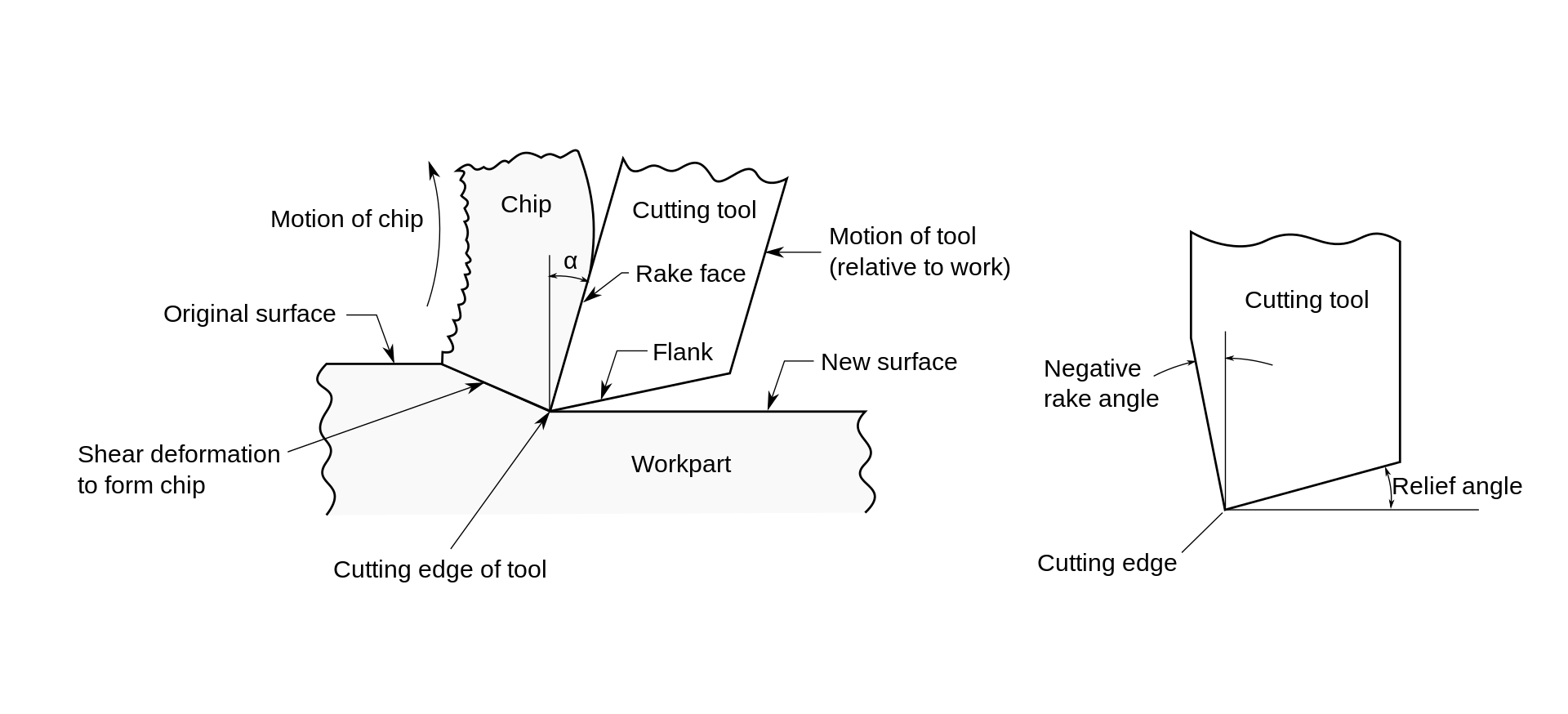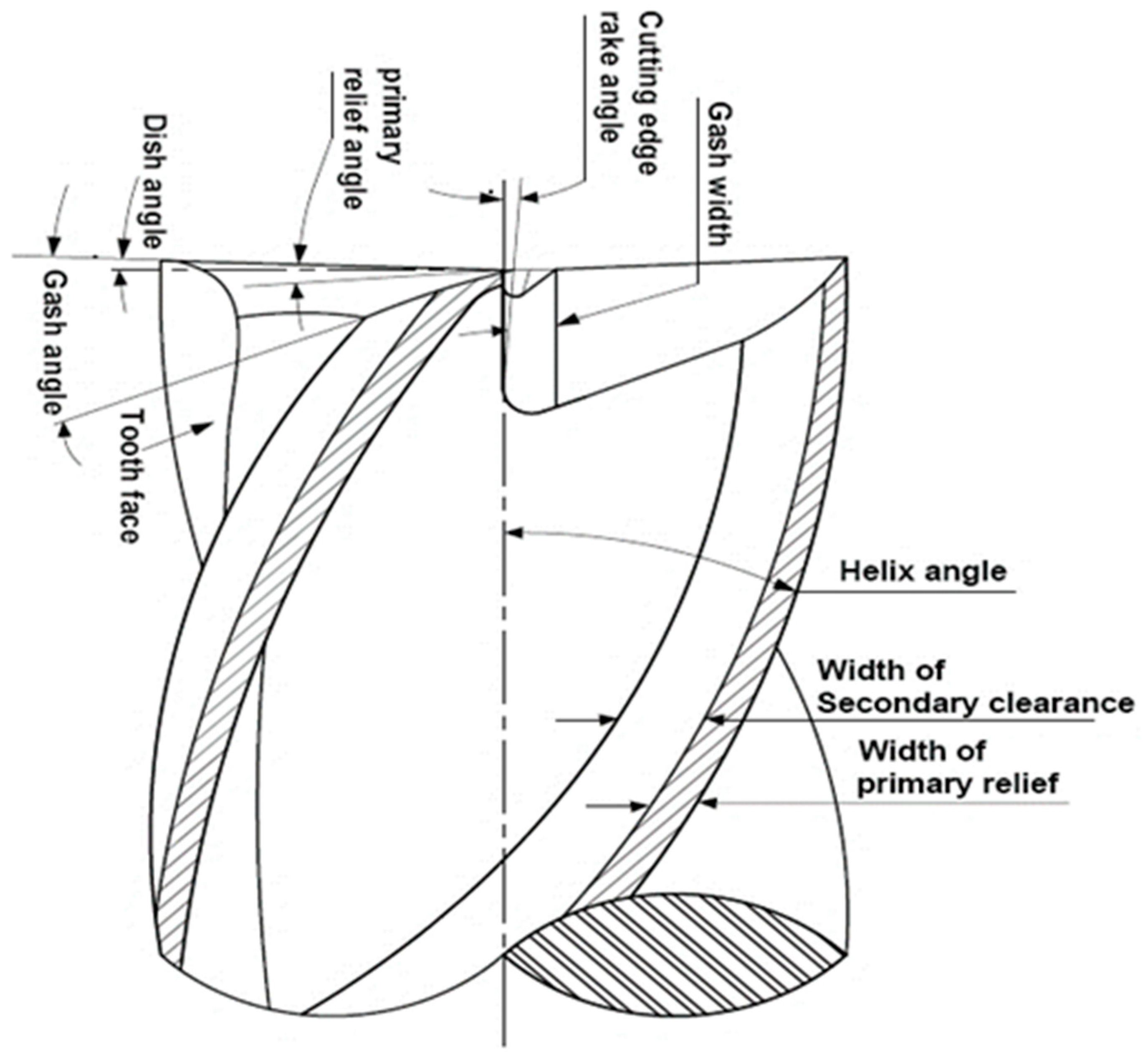- Joined
- Apr 23, 2018
- Messages
- 6,533
Good call out, @mikey . I don't have the books in front of me, but I have the web. With helical cutters, the basic geometries of a lathe bit still apply:

And for brass, we want 0 to -4 degrees rake:

Which is taken from the cutting edge rake angle:

So, by "blunting", or more precisely grinding square and sharp the face of the cutting edge, you are achieving the correction of the rake to suit the material.

And for brass, we want 0 to -4 degrees rake:

Which is taken from the cutting edge rake angle:

So, by "blunting", or more precisely grinding square and sharp the face of the cutting edge, you are achieving the correction of the rake to suit the material.

